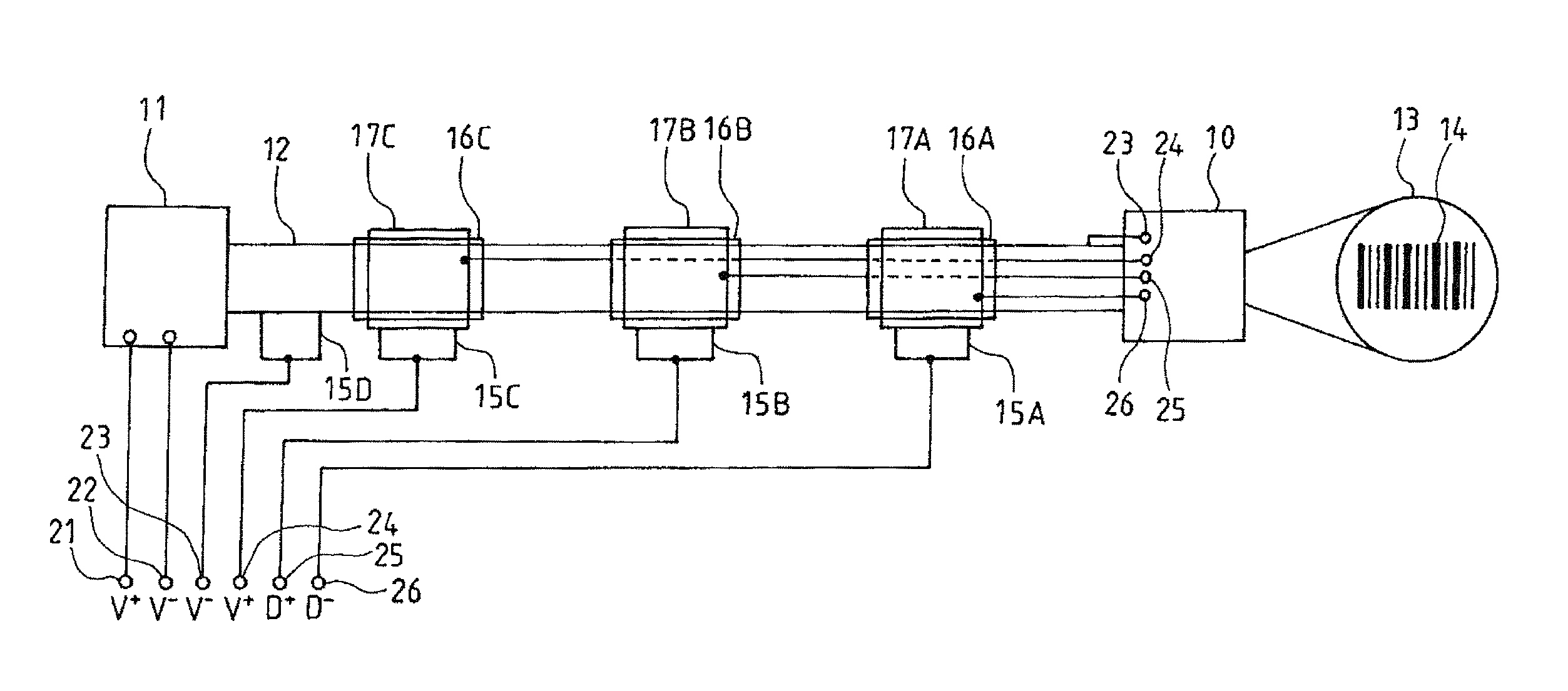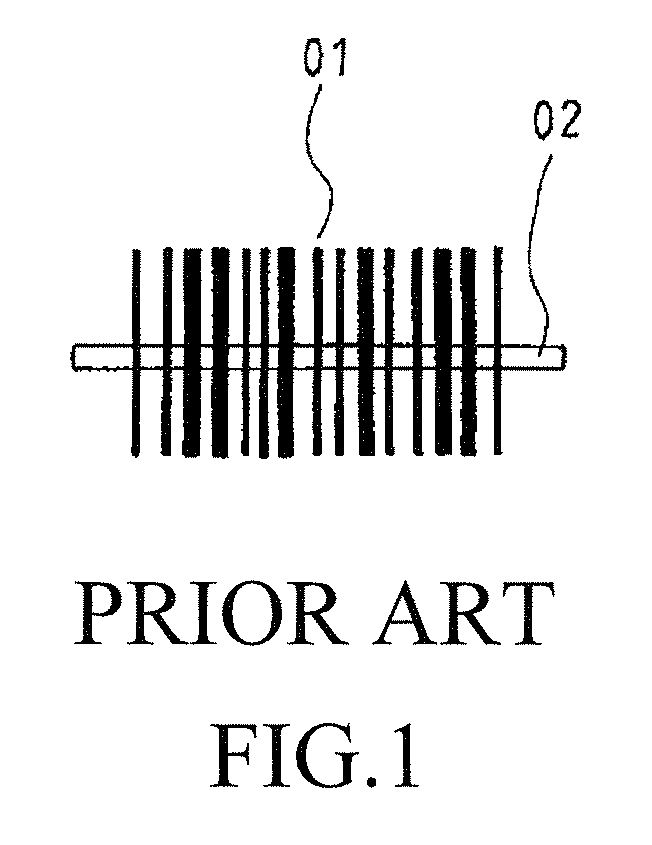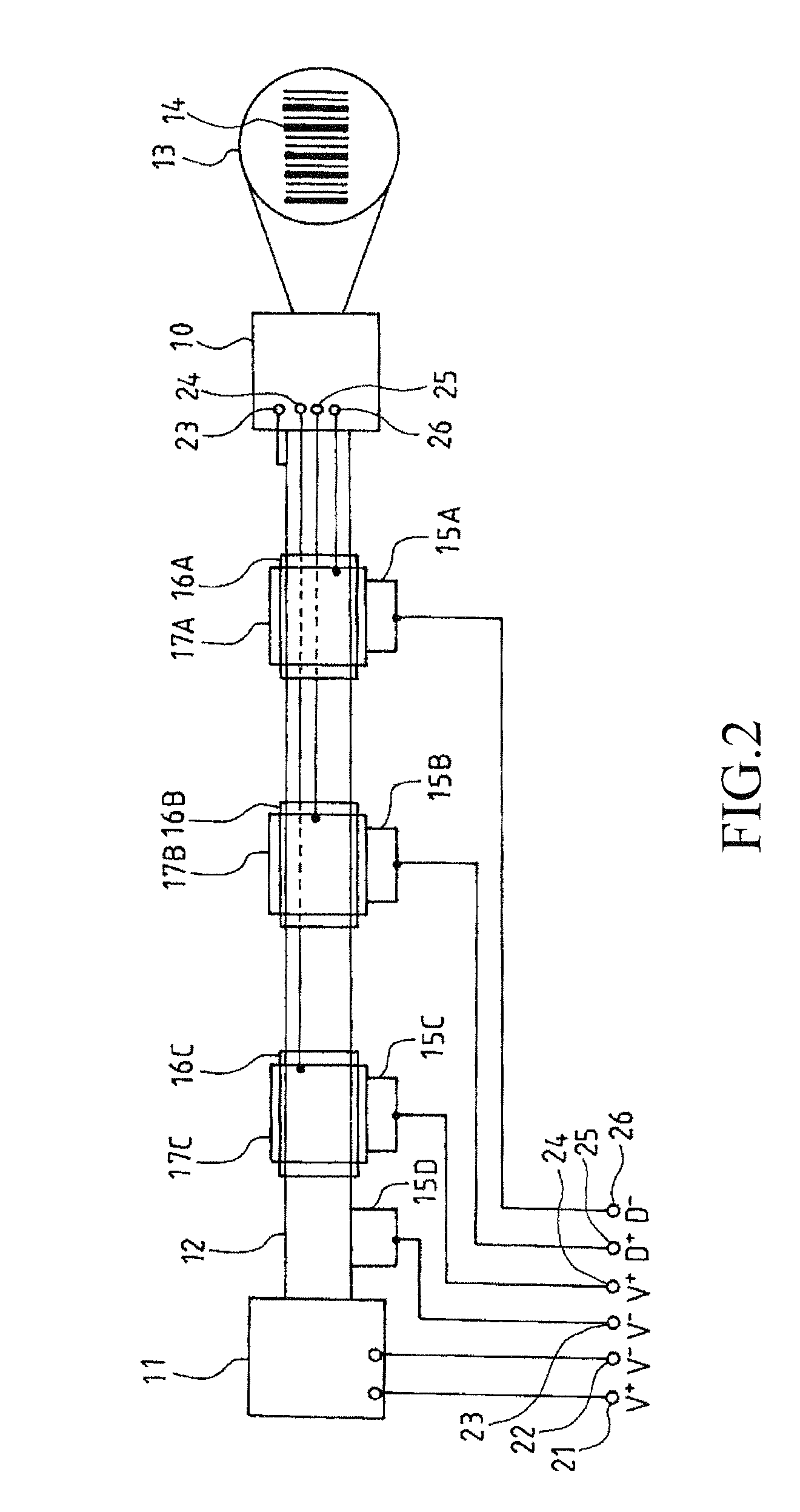Rotary one-dimensional barcode reading device
- Summary
- Abstract
- Description
- Claims
- Application Information
AI Technical Summary
Benefits of technology
Problems solved by technology
Method used
Image
Examples
first embodiment
[0021]Referring to FIG. 2, the present invention is shown. The present invention is constructed to comprise an existing direction-dependent 1-D barcode reader 10, which is known in the art, having a light source 02 that is linear and the same as that shown in FIG. 1. The linear light source 02 must be manipulated in a manual manner to align to the direction normal to a barcode 01 in order to read the barcode 01. The present invention mainly comprises a motor 11 and the shaft 12 mounted to the motor 11. The barcode reader 10 is mounted to the shaft 12, whereby when the motor 11 is put into rotation, the light source of the barcode reader 10 is converted from a linear form into a circular light irradiation surface 13 as shown in the drawing. The light irradiation surface 13 is sized to completely cover the barcode 14. Consequently, regardless of the direction in which the barcode 14 is positioned, the barcode 14 can be properly read. The light source used can be visible or invisible.
[...
second embodiment
[0023]Referring to FIG. 3, in the present invention, a direct-current (DC) motor is adopted. The DC motor may share the same power source with the barcode reader 10 and the wiring arrangement is illustrated in the drawing.
third embodiment
[0024]Referring to FIG. 4, in the present invention, the shaft 12 is made hollow and the power line 24 extends through an aperture 27 into the hollow interior of the shaft 12. Similarly, the signal line 25 extends from the inside to the outside of the shaft 12 through an aperture 28. In this way, the insulation rings 16A, 16B can be past around. The manufacturing of the this arrangement may combine the insulation rings 16A, 16B, 16C together as a unitary member. Or alternatively, a shaft made of insulation substance may be used and in this case, the insulation rings 16A, 16B, 16C can be omitted. The metal rings 17A, 17B, 17C can be mounted by adhesives or can alternatively fixed in the manner shown in the drawing with pins 18A, 18B, 18C.
[0025]Referring to FIG. 4, the present invention may further comprises a laser light source that project a laser beam to a center of a barcode to be read as a pointing light spot 19 to facilitate reading. It will be switched off when the LED light so...
PUM
 Login to View More
Login to View More Abstract
Description
Claims
Application Information
 Login to View More
Login to View More - R&D
- Intellectual Property
- Life Sciences
- Materials
- Tech Scout
- Unparalleled Data Quality
- Higher Quality Content
- 60% Fewer Hallucinations
Browse by: Latest US Patents, China's latest patents, Technical Efficacy Thesaurus, Application Domain, Technology Topic, Popular Technical Reports.
© 2025 PatSnap. All rights reserved.Legal|Privacy policy|Modern Slavery Act Transparency Statement|Sitemap|About US| Contact US: help@patsnap.com



